Resource Centers
Lean Manufacturing Terminology
Lean has a language of its own. We have separated lean terms into six subdivisions: General Terms, Workflow, Workplace Organization, Workplace Simplification, Process Improvement, and Measures.
General Terms
- Waste: Any aspect of a task or activity that does not add value.
- Value Stream: All tasks and activities needed to transform input materials and information into an output.
- Current State: The current or existing view of the workflow.
- Product Family: A grouping of products using similar processing methods.
- Future State: A potential improved view of the workflow.
Workflow
- JiT: Just-in-time means providing what is needed, when it is needed, in the quantity it is needed.
- One-piece Flow: A practice where product is moved from one workstation to the next one piece at a time without allowing inventory to build up in-between steps.
- Takt Time: The rate at which the customer uses a product. It is calculated by dividing the total daily operating time by the total daily customer demand.
- Bottlenecks: The step in a process line that limits the throughput of the entire process line.
- Pull vs. Push: Two diametrically opposite scheduling philosophies. Push manufacturing schedules are dictated by a formal production schedule where a new lot is pushed onto the first step of the process. With pull manufacturing, a customer order triggers the start of a new lot; typically empty kanbans pull new production from the prior process step.
- Monuments: Equipment that is too costly or disruptive to move is considered a monument.
- Kanbans: A visual signal, typically a re-order card or container that triggers a pull manufacturing system.
Workplace Organization
- The 5S’s: A formal approach to organizing the workplace.
- Work Cell: A cross-functional process line typically including equipment to process products (or product families) from start to finish.
- TPM: Total productive maintenance, an approach that leads to increased equipment availability by reducing downtime due to failure and unplanned (emergency) repairs.
Workplace Simplification
- Mistake-Proofing: A mistake prevention approach.
- SMED: Literally “Single Minute Exchange of Dies.” It stands for set-up reduction, an approach that minimizes the time the process is down being changed over from one product to another.
- Visual Workplace: Use of visual controls and visual displays to help employees maintain control of their work areas and assess performance at a glance.
- DFA/DFM: Design for Assembly and Design for Manufacturability techniques that improve manufacturing productivity.
- Kaizen: Continuous improvement on top of continuous improvement.
Process Improvement
- Problem-Solving Process: A formal, structured approach to solving a problem such as the 8D Process or DMAIC.
- Kaizen Event: A focused, short-term event to make immediate improvements.
- FMEA: Failure Mode and Effects Analysis, a technique used to assess risk in a process or a product design.
- QFD: Quality Function Deployment, a technique used to identify the “Voice of the Customer” and match customer requirements and technical requirements.
- DOE: Design of Experiments, a family of statistical improvement techniques.
Measures
- COQ: Cost of Quality, a quantification of the cost of poor quality.
- Set-Up Time: The time it takes to set-up a process to produce the next product, measured from the last good part of the prior lot to the first good part of the new lot.
- On-Time Delivery: A measure of the success rate of delivering (or shipping) on the date promised.
- Lead Time: The time quoted to customers (usually in days or weeks) between the date of purchase and the shipment date.
- Inventory Turns: the number of times the value of inventory is turned over in a year; 12 turns means that the value of inventory is turned 12 times per year or once per month.
Four Vital Tools
The number and extent of tools to help lean efforts is probably unending but these tools are vital.
- Value Stream MappingA graphical representation of all tasks and activities needed to transform input materials and information into an output.
- The 5S’s: A structured approach to clean and organize the workplace.
- Set-Up Reduction: Reducing the time to set-up or change-over a process.
- TPM: Total Productive Maintenance: Techniques to improve equipment reliability by reducing the frequency of breakdowns and failures.
Major Techniques
Here are some of the major techniques used in lean.
- Workflow Analysis: Analyzing the physical layout of a process flow with the intent of reducing travel distances, eliminating redundancies, improving communication and quality.
- Layouts & Work Cell Design: Using the results of value stream mapping and workflow analysis to improve the macro and micro layout of the process.
- Simulated Continuous Flow: With a step-wise batch operation, simulating a continuous process with small lot sizes (as small as a lot size of 1), elimination of WIP, and direct feed of each process step from its prior step.
- Pull Scheduling: Starting a new lot with an order from a customer.
- Kanban: A visual signal, typically a re-order card or container that triggers a pull manufacturing system.
- Load Balancing: Matching or adjusting the throughput rate of all steps in a workflow.
- De-bottlenecking: Improving the throughput rate of the process bottleneck.


